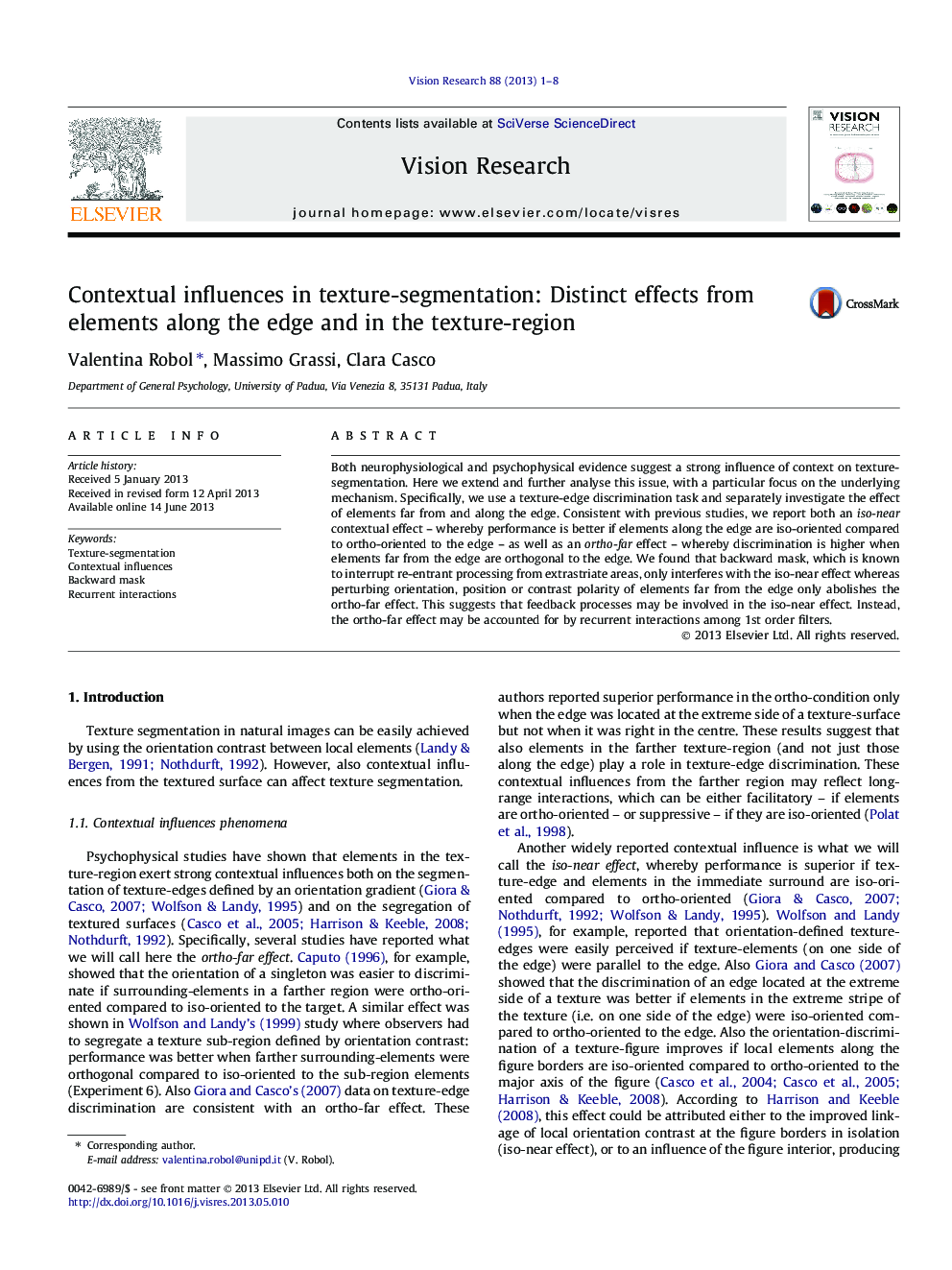| Article ID | Journal | Published Year | Pages | File Type |
|---|---|---|---|---|
| 4033774 | Vision Research | 2013 | 8 Pages |
•We investigated contextual influences on texture-edge discrimination.•Both iso-near and ortho-far contextual effects are reported.•The iso-near effect relies on 2nd order filters enhancement and feedback processes.•Recurrent interactions among 1st order filters explain the ortho-far effect.
Both neurophysiological and psychophysical evidence suggest a strong influence of context on texture-segmentation. Here we extend and further analyse this issue, with a particular focus on the underlying mechanism. Specifically, we use a texture-edge discrimination task and separately investigate the effect of elements far from and along the edge. Consistent with previous studies, we report both an iso-near contextual effect – whereby performance is better if elements along the edge are iso-oriented compared to ortho-oriented to the edge – as well as an ortho-far effect – whereby discrimination is higher when elements far from the edge are orthogonal to the edge. We found that backward mask, which is known to interrupt re-entrant processing from extrastriate areas, only interferes with the iso-near effect whereas perturbing orientation, position or contrast polarity of elements far from the edge only abolishes the ortho-far effect. This suggests that feedback processes may be involved in the iso-near effect. Instead, the ortho-far effect may be accounted for by recurrent interactions among 1st order filters.
